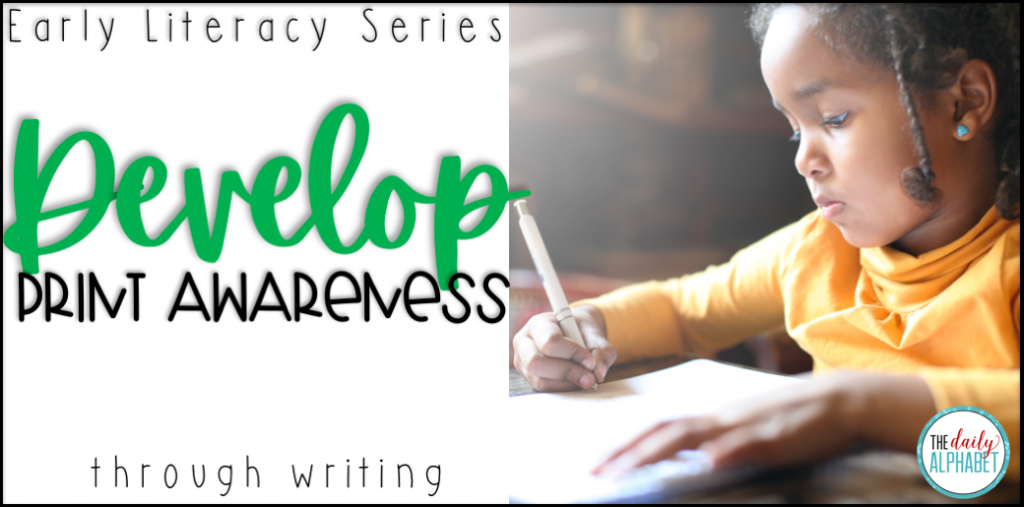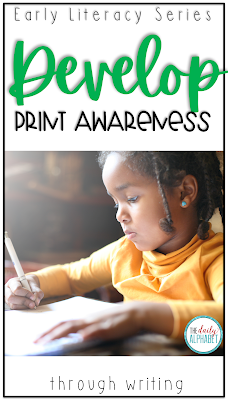
There are many recipes in developing print awareness, but they all pretty much contain the same ingredients. We can help students to develop print awareness through reading, but we can also work on it during writing. Just as reading activities are crucial components of an effective literacy program, writing plays an important part as well.
Shared Writing
Shared writing is similar to shared reading in that the teacher and students work together to create a message or a story. During this time, the teacher is in charge of the writing and establishes how writing works. The teacher also helps students to understand and see that print is an idea or thought written down. Shared writing also provides a ton of opportunities for teachable moments. Teachers can review letters, sound-symbol correspondence, and phonological awareness as well as concepts of print.
Interactive Writing
Interactive writing once again allows the teacher and students to work together. However, this time the teacher is not the only one with the pen. Students are able to participate by writing letters or words, and then the teacher completes the rest. This is a fun time for students because they really feel as if they had a part in the activity. They absolutely love to share the pen!

Guided Writing
In previous years guided writing began more in first grade, although now it seems to have made its way to kindergarten. Guided writing is normally what I do during our writing workshop time. It consists of a mini-lesson, where the teacher takes the time to model and re-model everything. This is when workshop procedures are reviewed, as well as the writing process and writing mechanics among other things. In guided writing, the children are writing and you are walking around responding to that writing. They could also be coming to you for writing conferences. Then students have independent writing time, which we’ll talk about next, and at the end of the writing period, we have share time.

Independent Writing
It is necessary that students write on a daily basis. They need the time to explore writing and concepts of print. If their writing time is sporadic, you will not see the necessary growth in their writing. During independent writing, students are writing without input from the teacher. They are however able to get help from their peers.

I think that writing is more difficult to teach than reading. There are a few things that I have learned and I think that it makes all of the difference. Begin teaching writing as early as you can, and as often as you can, preferably every day. It’s as simple as that. The more your students participate in writing, the better off they’ll be. It makes a world of difference in their development of print awareness.
Pin for later!












